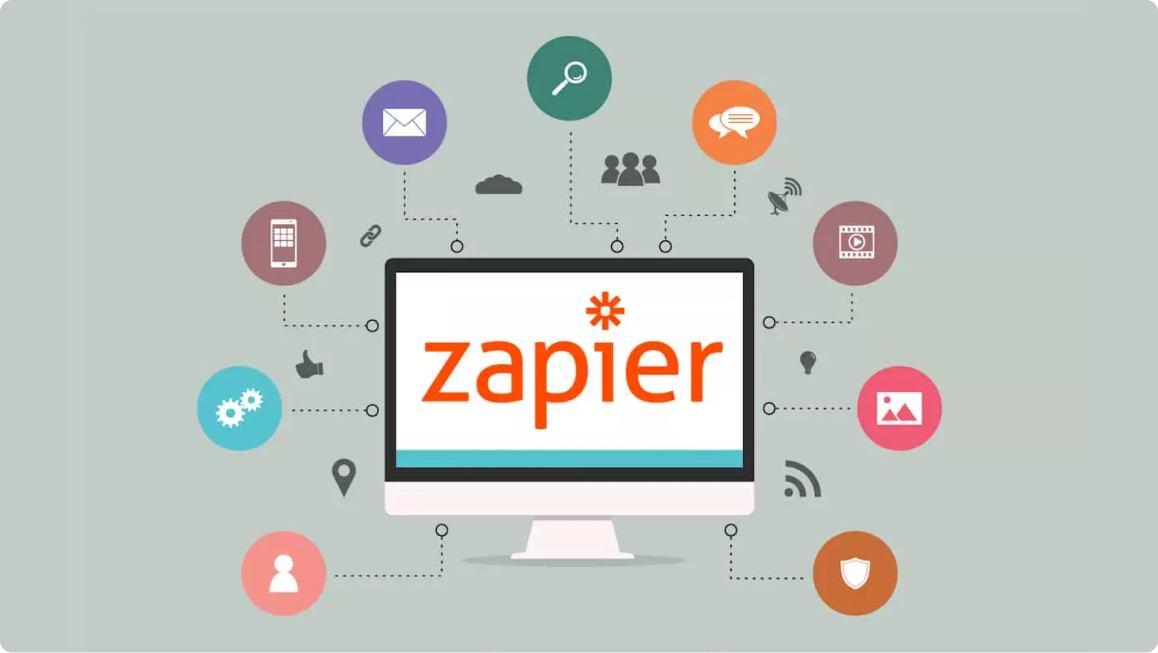
Zapier is a powerful automation platform designed to connect thousands of apps, allowing users to automate repetitive tasks and streamline workflows with ease.

Leveraging Zapier’s features helps businesses and individuals save time, reduce manual errors, and improve productivity by creating automated workflows (known as “Zaps”) without needing coding expertise.
Time Savings Through Automation: By automating repetitive tasks like data entry, notifications, and cross-platform updates, Zapier frees up valuable time, allowing teams to focus on higher-priority tasks. Automations run in the background, handling everything from transferring data between apps to sending customized responses.
Improved Accuracy and Reduced Errors: Manual data transfer or repetitive actions are prone to human error. Zapier automates these actions, reducing errors and ensuring data consistency across multiple applications, enhancing overall accuracy.
Scalability for Businesses of All Sizes: Zapier is highly scalable and can grow alongside a business. As needs evolve, users can build complex workflows, manage large volumes of data, and connect an ever-growing list of apps, ensuring the platform remains valuable at any growth stage.
Cost-Effective Solution for Enhanced Productivity: By automating tasks typically handled by staff, Zapier can reduce staffing needs for certain repetitive tasks, making it a cost-effective productivity tool for small businesses and startups looking to maximize efficiency without expanding their teams.
Ease of Use Without Coding: Zapier is designed to be user-friendly, making automation accessible to people with limited technical expertise. Its intuitive interface and pre-built templates allow users to set up complex workflows without writing code, empowering teams to customize their processes independently.
Seamless App Integration: Zapier connects with over 5,000 popular apps, including Gmail, Slack, Salesforce, Google Sheets, and Trello. Users can link these apps to create custom workflows that suit their unique business needs, allowing for smooth and uninterrupted data flow across platforms.
Multi-Step Zaps: With multi-step Zaps, users can build workflows that incorporate several actions and triggers, creating sophisticated automations. For example, a single workflow can capture leads from a form, send a confirmation email, and add them to a CRM, all in one automated process.
Conditional Logic with Paths: Zapier’s Paths feature introduces “if/then” logic, enabling workflows to change direction based on specific conditions. This allows users to create dynamic workflows that respond differently depending on data inputs, such as sending high-priority notifications based on certain values or routing tasks to different departments.
Schedule and Delays: With the Schedule and Delay features, users can set specific times for actions or add delays within workflows. This is ideal for processes requiring timing control, like sending automated weekly reports or scheduling follow-ups after a predetermined period.
Webhooks and API Integrations: or those with technical expertise, Zapier supports webhooks and custom API integrations, enabling connections with apps not natively supported on the platform. This opens doors to even more customization and control for advanced users.
Data Formatting and Transformations: Zapier offers powerful data manipulation features that allow users to format, split, merge, and perform other transformations on data within a workflow. This ensures data appears in the correct format across different apps, improving data quality and readability.
Error Reporting and Task History: Zapier provides users with detailed task histories, making it easy to monitor and troubleshoot workflows. Notifications for workflow errors allow quick adjustments to Zaps, minimizing workflow downtime and ensuring operations continue smoothly.
Collaboration Tools: Teams can work collaboratively within Zapier by sharing workflows and automations across accounts. User management features allow team members to create, edit, and manage workflows while maintaining visibility across automations.
Pre-Built Templates for Quick Start: Zapier provides a library of pre-built templates for common workflows, which helps new users get started quickly. These templates cover a wide range of use cases, from social media automation to lead management, allowing users to jumpstart automation and easily adapt workflows to fit their needs.
"*" indicates required fields
Website
Company Info
Zapier was founded on August 1, 2012 in Columbia

Changing templates will take time and may require a template change fee.
Not sure what to choose? Contact us.